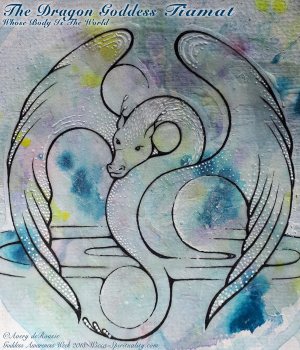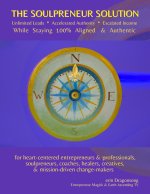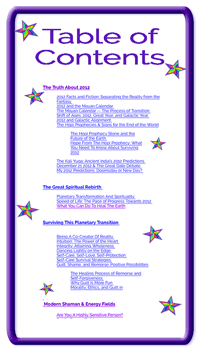Tiamat
 |
|
|
|
|
 |
The Dragon Goddess Tiamat: Cosmic Creatrix
Pronunciation Guide:
TEE-ah-mat
1 See Tiamat's Story.
2 Consider how closely that sounds like the universal sound that a child makes: mama, amma...
Tiamat was a primary Goddess in Babylonia: She was mother of all the Gods. Before She gave birth to them, there were no Gods... only She and then later Her consort, Apsu (whom She also created).1
Tiamat was known as the Pure, the Shining, the Glistening, the Deeps, "Ummu-Hubur2 who formed all things."
She was the primordial Chaos, and the all-powerful, nurturing Mother of everything in existence.
She was associated with the salt water ocean, the origin of life on Earth. From Her waters, She gave rise to the land and separated it from the sky, as the ocean's horizon does.
Tiamat was sometimes seen as a Dragon (and mother of dragons) — the personification of elemental forces of Nature that can never be tamed or constrained. She is the original Dragon — a sort of winged lion — the powerful Goddess that men have been trying to slay for millennia.
As the Dragon, Tiamat also holds fire within Her, and breathes the fire to warm Her children — both in the waters and on land — so that they can live.
She is not only the nourishing and tender Mother, but the powerful protective Mother as well. In the Babylonian creation myth, Tiamat's son/consort Apsu wants to kill Their children, perhaps out of fear for His own life, but Tiamat refuses. When the children kill Apsu, however, She becomes the furious Goddess intent on visiting ancient justice on the murderers.
1 See Tiamat's Story.
2 Consider how closely that sounds like the universal sound that a child makes: mama, amma...
The Babylonian Creation Myth
We meet Tiamat primarily in the Babylonian Creation Myth, the Enuma Elish. This is the story of children rising up to take the throne from their parents. It depicts in particular the destruction the Divine Feminine, and the rise of patriarchy: man's supremacy over woman as well as Earth. It is essentially apologistic, arguing for the overturning of society, the necessity of wresting power from the Mother.
1. When in the height heaven was not named,
2. And the earth beneath did not yet bear a name,
3. And the primeval Apsu, who begat them,
4. And chaos, Tiamat, the mother of them both,--
5. Their waters were mingled together,
6. And no field was formed, no marsh was to be seen;
7. When of the gods none had been called into being,
8. And none bore a name, and no destinies [were ordained];
9. Then were created the gods in the midst of [heaven]
— The Enuma Elish ,the Seven Tablets of the History of Creation: First Tablet
And from that story, since that time, humanity has told the tale of feminine nature as destructive and dangerous, needing to be guided, reshaped, and controlled by men.
But originally the Feminine was powerful, fierce, formidable, as well as loving and nurturing. She represents the wholeness of feminine potential, and the beauty of a whole woman: complete unto herself, strong, tender, indomitable. This is the Goddess who is being reborn today — under many names, and within each of us. Rituals of the triumph of Tiamat over Her seeming-destruction can help us as women, and humanity as a whole, regain the lost and vital half of ourselves.

|











